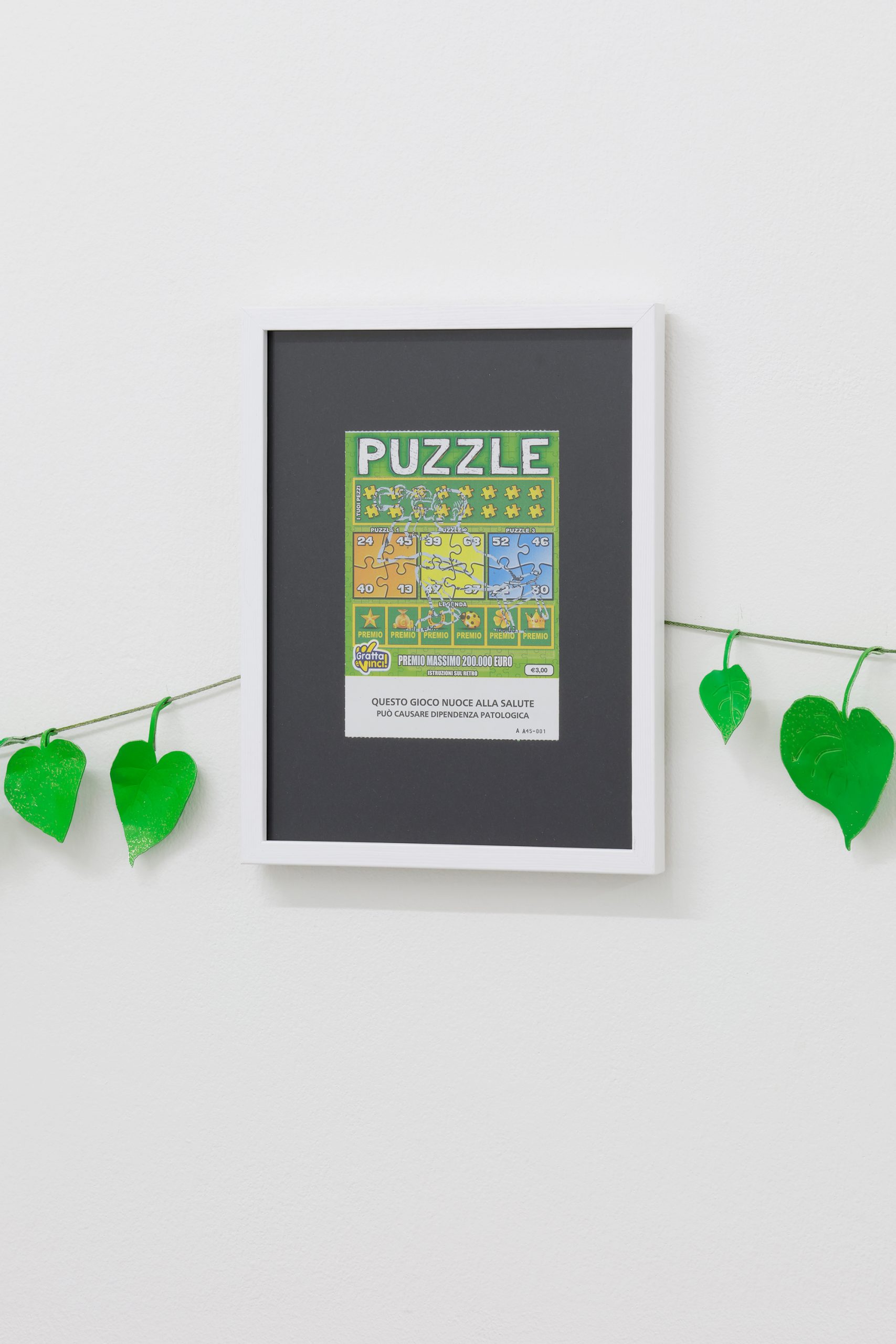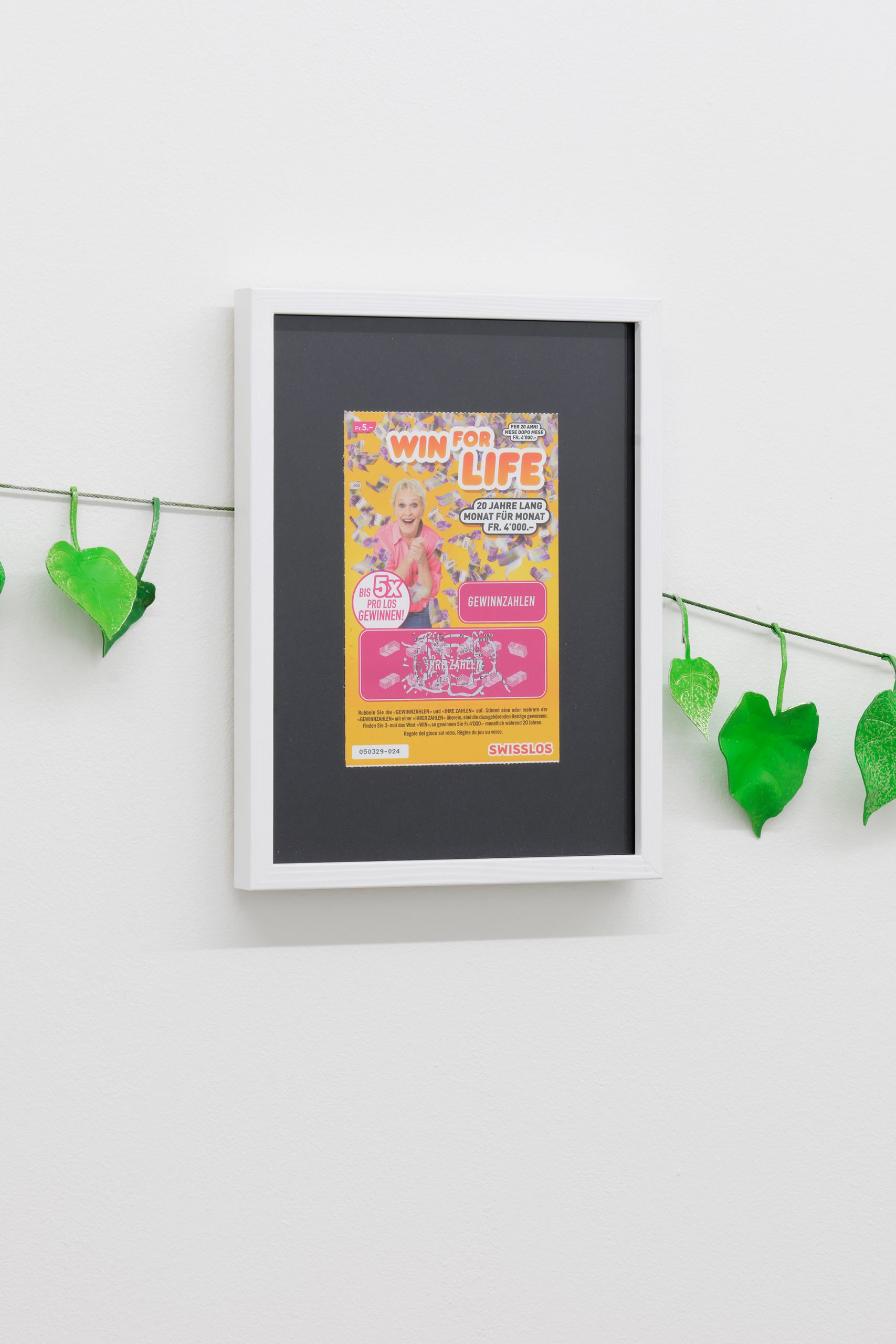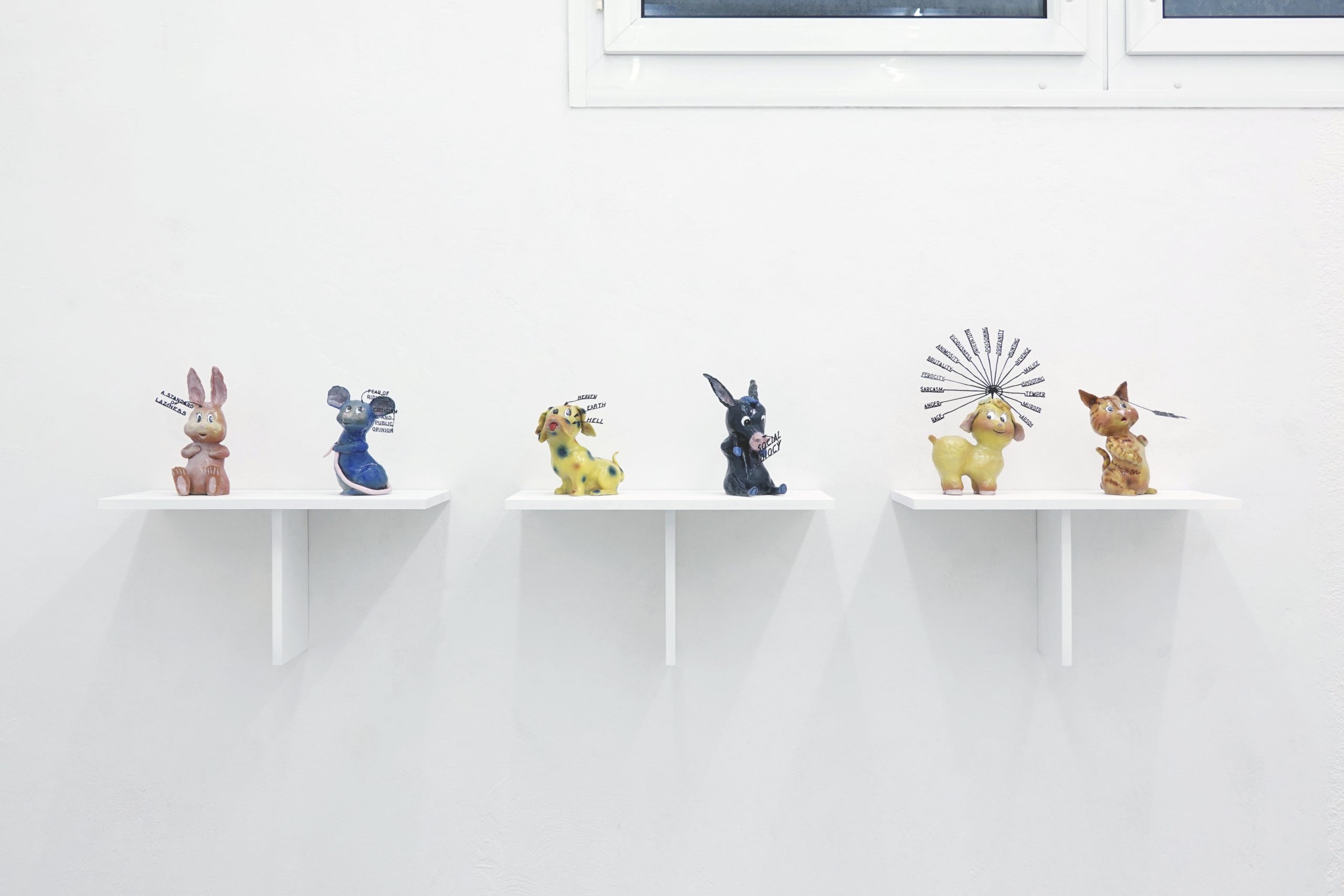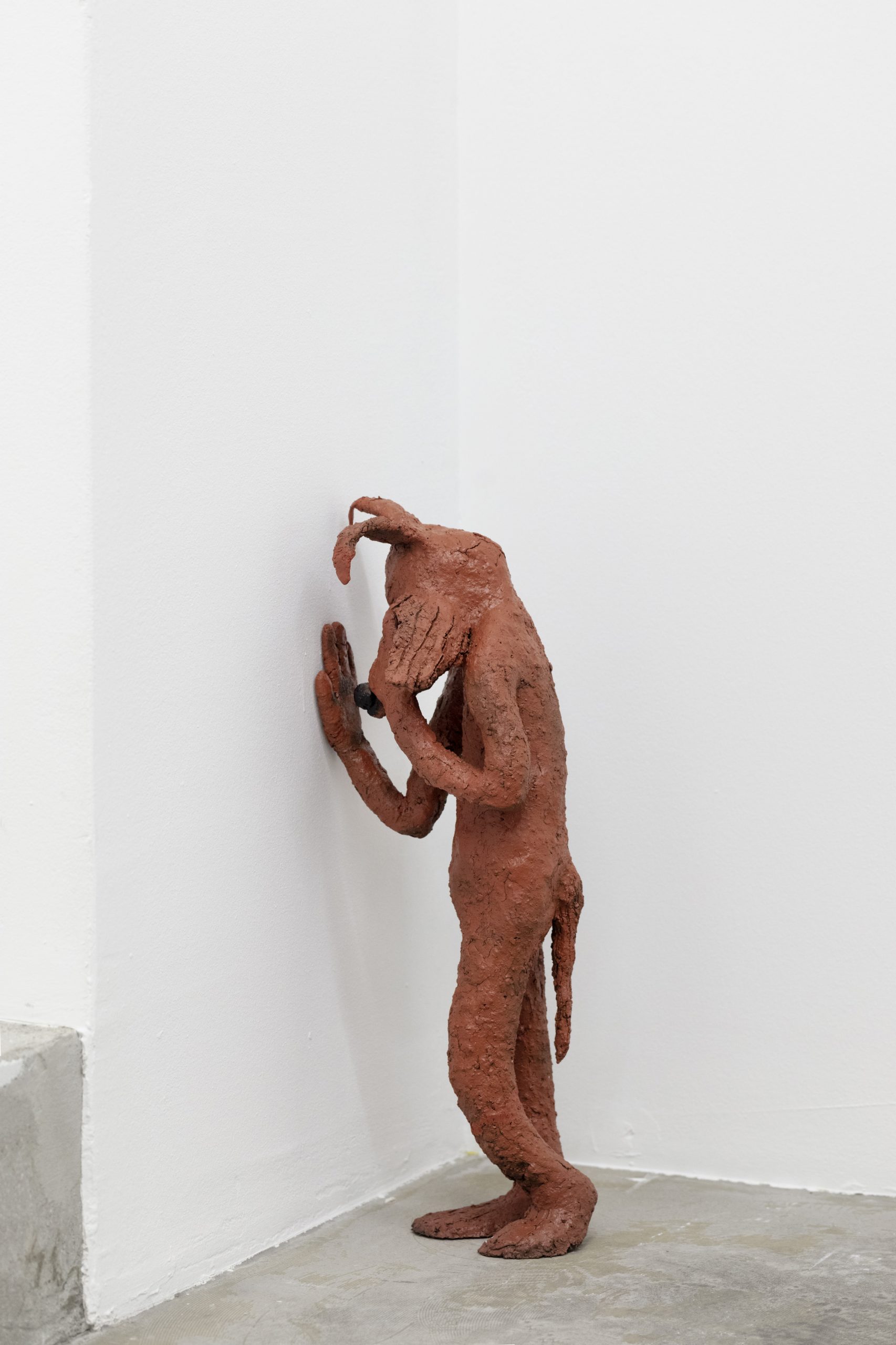Cassidy Toner Bets Big
Ninety percent of gambling addicts quit right before they are about to win big. Or, at the very least, that is a lie that taunts the victim of sunk cost. A gambler straddles time: nostalgic for the past, bereaved of the present, and defiantly bullish about the future. They are distracted. Beyond optimism, the gambler maintains a blinding sense of possibility which—for brief moments of suspense—eclipses their present. This three-layer timeline motors each bet, constantly upping the ante.

It’s this orchestra of past and future that also propels someone like Cassidy Toner to wager her life and labor against her art world audience. When critic Paolo Baggi wrote about the Baltimore-born and Basel-based Toner, he noted that repeated bets parallel the repetition of a bad joke. This tactic appears in her series of objects Let me know how it turns out (2014–2022), where she plays with her odds by partially scratching off lottery cards. Rather than break the anticipation of what numbers lie underneath, the top layers remain intact except for small scenes inscribed by the artist. Among them are a man sitting on a stool, looking so intently into a pair of binoculars that he is about to slide off; a detail of an Ad Reinhardt cartoon; and two skeletons kicking back and hanging loose at the beach. With the frames a few inches larger than the cards themselves, these works supercharge their material against the gallerists and institutions that surround Toner. In the cost-benefit analysis of the cynical dealer, these lotto cards might be worth more as objects than artworks. In subject and material, Let me know how it turns out places the artist, dealer, and audience all as the gambler who determines themselves to failure. The late theorist Lauren Berlant termed this unfaltering insistence on the world: humorless comedy, in which the joke dissolves and is replaced by a subject’s mode of being as simultaneously imposing, undone, and helpless.


Like everyone on the casino floor, Toner casts all players in the art world—herself, most importantly—as people bound to risk. This act bolsters her comedic approach, where no single person or institution is subject to ridicule; instead, humorlessness looks to humiliate all. Take Studio Sitcom Pilot (2023), a seventeen-minute video that documents the artist in her Basel studio and figures her as the racehorse or craps player on a streak. Formally, the video escalates Bruce Nauman’s Studio Films (1966–67) for a Hollywood executive: a pre-recorded studio audience laughs as the artist plays with her dog, boos as she takes a nap, and cheers as she writes down an idea at her desk. More than a commentary on her productivity, Toner’s video points to the naturalization of “good” artists and their “good” lives, or as comedy theorist Alenka Zupanačič points out, the obsession with process and lifestyle that allows for an all-too-easy brandability and, in Toner’s case, monetization.1

Framing the video as a sitcom readies it for market consumption, but it also highlights that the economic structure of television humor requires both reliable repetition and novel plug-ins to a formula—a mode of working Toner maps onto the art world. Moving between slapstick comedy and cerebral explorations of material and labor might feel like whiplash, but its double-edged swing sidesteps a lot of tactics in artmaking that Toner feels allergic to (she’s ever-eager to produce a new series as soon as one gains traction, or dredge up a cheap reprise when asked for an encore). For Toner, comedy functions as a kind access point to her artistic perspective; it immediately situates viewers as an expectant audience, yet it refuses to give in to an anticipated outcome.
“Like everyone on the casino floor, Toner casts all players in the art world—herself, most importantly—as people bound to risk.”
Playing within and beyond comedic and artistic formulas needles its way through all of Toner’s practice, where kitsch, bad jokes, slapstick, and the gamble reference a longer history of expedient entertainment for the industrialized worker. Some works look more toward the labor and laughter of artmaking. More recently, Toner sculpted an army of ceramic baby animals and adorable creatures, slip-cast and glossy. For example, in the series I have a fetish for being judged, so get me off (2021), a donkey, a pink bunny, and others swoon and gawk with giant animated eyes. The sculptures don’t convey the actual animals; rather they diligently adhere to cartoonish archetypes. A yellow blushing lamb dons a flower crown, and Toner fabricated a radiating halo out of steel to amplify the cheap iconographic allusion. Each of the metal crown’s spokes terminates at a different word indicating some form of wrongdoing—from sarcasm to arson to murder.

Such shelved tchotchkes turn the artist’s studio into an artisanal factory, yet the sculptures’ sleekness apposes disturbing damnations from the turn of the century: For I have a fetish…, Toner sourced phrenology annotations of skulls from educational materials. As Zupančič and other comedy theorists would note, this traditional comedic move—where two distinct entities are mapped together toward a thesis—capitalizes on an immediate cut or contrast. Here, however, the classic structure and its components are held at arm’s length (perhaps why Toner often draws from the semi-sincerity of Andy Kaufman) and adopts a kind of dysfunction which reworks the labor of the jokester from one who must produce reaction into a sower of confusion and misrecognition. This tie between time, work, and comedy uncovers a bank on futurity similar to that of the gambler: the hope that assets will appreciate, a company will expand, or that an all-revealing punchline is sure to come. But Toner is acutely aware that she and so many of her generation might not live to see past the set-up.
Toner’s latest work continues her interest in sculpture with a historical reach and inviting slapstick—a series of alabaster stone masses with plaster and plastic appendages that mimic a cartoon character’s motion. In a prior group of sculptures, Toner interpreted Wile E. Coyote, in roughly edged ceramic, in the midst of an existential crisis. These new stone works intend to explore the idea of translating a form from reference to cartoon to sculpture, and this dimensional oscillation imbues them with tragedy. They squirm with their hands and feet unable to reach the ground. Their alabaster bodies bog them down, physically and in their material history which extends from the Classics to giftshop fare today. In a final flourish, Toner illuminates each from within to reveal the stone’s texture. Indulging her theatrical bent lays bare Toner’s desire to entertain and give the visitor a show. It is indicative of a practice which is starkly unafraid of playing to the crowd while letting no one, herself included, get off easy.

Suspending the gestalt of intended sincerity grants the artwork and its artist a moment of intrigue and attention amidst today’s brutal standards of object and entertainment production. With her constant play off the canon, her adherence to suspension and many memento mori, Toner lurks around artmaking like the gambler. She compares every exhibition opening with young artists to a crowd of lotto ticket holders, each a little hungry and banking on their odds against all others. She doesn’t mean it facetiously; it’s the nature of her work.
When asked about her hopes for the coming years in her career, Toner took a moment and laughed: “I hope I win.”
Olivia Rodrigues is a curator and writer based in Brooklyn, New York. She holds a Masters in Curatorial Studies from Bard College and centers her research around interdisciplinary artworks that touch on performance, labor, and joke-making.
NOTES
1. Alenka Zupančič, The Odd One in: On Comedy, Short Circuits (Cambridge, M.A..: MIT Press, 2008), 7.